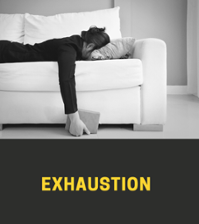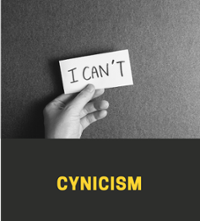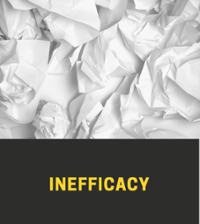Avoiding the "Always On" Pressure - Preventing Burnout
School of Professional & Continuing Education (SPCE)
Nearly all professionals experience job-related stress at some point in their careers. Most people feel overwhelmed or overcommitted at work from time to time. For many professionals, workplace stress may build in advance of an important deadline or meeting and then dissipate shortly thereafter. In some cases, this acute stress may sharpen focus, deepen motivation, and improve results at work. But, in other cases, workplace stress may become so pervasive and relentless that it leads to a problematic and even debilitating state known as burnout.


 Burnout is a three-component syndrome that arises in response to chronic stressors on the job. Elements of burnout include exhaustion, cynicism, and inefficacy. Exhaustion is physical, cognitive, or emotional fatigue. Cynicism refers to detachment from or even negative emotions about assignments, projects, colleagues, or clients. Inefficacy refers to feelings of incompetence and lack of achievement or productivity. Burnout can lead to physical illness, increased feelings of hopelessness, irritability, impatience, and poor interpersonal relationships. In severe cases, burnout can cause diminished executive functioning, attention, and memory, absenteeism, increased turnover, and decreased job performance.
Burnout is a three-component syndrome that arises in response to chronic stressors on the job. Elements of burnout include exhaustion, cynicism, and inefficacy. Exhaustion is physical, cognitive, or emotional fatigue. Cynicism refers to detachment from or even negative emotions about assignments, projects, colleagues, or clients. Inefficacy refers to feelings of incompetence and lack of achievement or productivity. Burnout can lead to physical illness, increased feelings of hopelessness, irritability, impatience, and poor interpersonal relationships. In severe cases, burnout can cause diminished executive functioning, attention, and memory, absenteeism, increased turnover, and decreased job performance.
There are many causes of burnout. When organizations encourage an “always-on” culture, people may find themselves unable to recover from workplace stress and at high risk of burnout. Similarly, in organizations that view long hours and non-stop work as evidence of commitment to the organization or job, people may find themselves vulnerable to burnout. If a job requires high levels of attention – either because of its chaotic or monotonous nature – people may experience burnout more quickly. Burnout may occur when people lack the time or resources to perform their job well. People who lack control of their workload or work schedule may be especially susceptible to burnout. When people constantly feel stretched beyond their capacity, they may struggle to find the resilience required to meet new challenges.
While burnout is often associated with hyper-competitive corporate cultures, burnout occurs across professions and industries. Rates of “purpose-driven” burnout are especially high among medical professionals, human services workers, educators, mission-focused executives, and nonprofit employees. Among the Mayo Clinic’s six risks of burnout, two relate to mindset: (1) you identify so strongly with work that you lack balance between your work life and personal life, and (2) you work in a helping profession.
One strategy to prevent burnout is self-care. By investing in activities and practices that restore physical, mental, and emotional well-being, individuals can recover from workplace stress and avoid burnout. Another strategy to avoid burnout is shifting perspective. One way to shift perspective is to begin a simple gratitude practice. Since burnout arises from work-related stress, reducing workplace stressors is an important strategy to avoid burnout. This often does not require a change in organization or position but may be achieved through honest discussion with supervisors and co-workers. A final strategy to avoid burnout is to seek out connections. By strengthening relationships with co-workers, individuals can develop a network of support to counter feelings of isolation that often accompany burnout.
